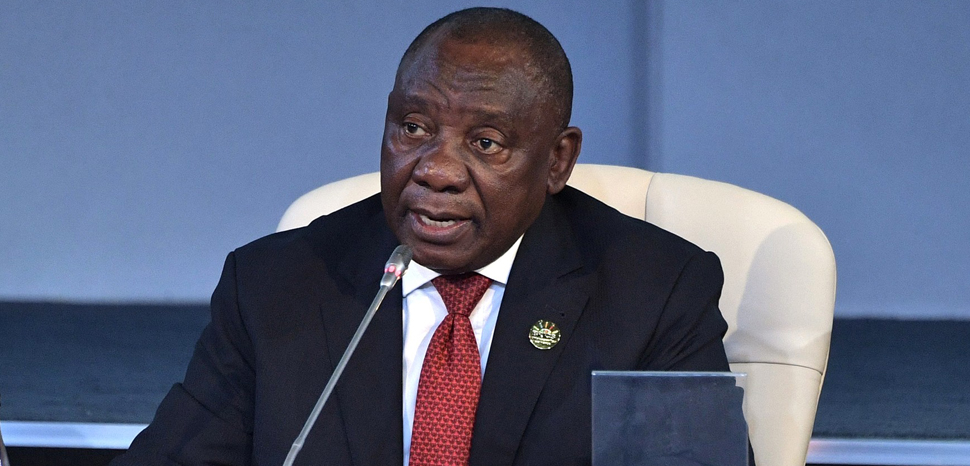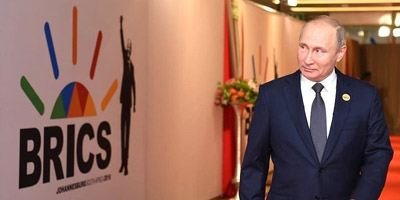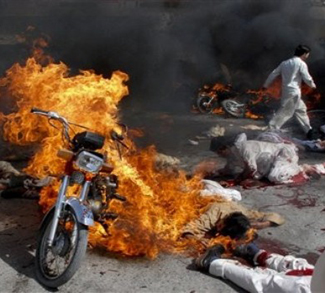South Africa went to the polls on May 8 to elect its sixth democratic government. Amid poor economic growth, extensive corruption, and infighting within the governing African National Congress (ANC), this election was billed as the most consequential since the end of Apartheid in 1994. Apart from minor issues at polling stations and technical questions regarding the balloting system, South Africa’s peaceful and orderly ’s electoral process has ensured further democratic consolidation, proving itself as a bastion for free and fair elections on the continent.
With 57.5% of the national vote, the ANC has maintained its governing majority. The official opposition remains the liberal Democratic Alliance (DA), with 20.7%. Completing the ‘big three’ is the leftwing Economic Freedom Fighters (EFF), which attained 10.8% of the vote. Eleven smaller parties captured enough votes to secure one or more seats in the sixth National Assembly. An assessment of the results illustrates several significant trends.
The fringe fails to factor in
While democracies around the world have been moving toward the fringes, South Africa appears to be maturing toward the middle. Though the center-left ANC and center-right DA shed the same number of seats gained by the left-wing EFF and right-wing Freedom Front Plus (FF+), 19 and 5 respectively, the threat of further splintering to an array of radical fringe parties did not materialize. None of these parties, including Black First, Land First which rejects white membership, and the National Front which advances a white secessionist state, achieved traction among the electorate. Neither party received a singular seat in Parliament.
While democracies around the world have been moving toward the fringes, South Africa appears to be maturing toward the middle.
The FF+ and EFF may appear to be the election’s big winners, but this analysis is superficial. The FF+ has simply captured a quadrant of the persistently mobile white conservative vote. Unlike the DA which has failed to support this group, the FF+ has offered it an unabashed home. The EFF almost doubled the bounty of its first electoral outing in 2014. It did, however, fail to make the kind of inroads it hoped for and was expected to achieve. The party – which calls itself the government-in-waiting, dominates local social media optics, attracts a significant sector of the young black vote, and whose leader is referred to as the commander-in-chief – can fill a football stadium with jubilant supporters at a pre-election rally. However, the party did not perform on the day that mattered. The ambitious EFF was seeking to capture a greater chunk of the ANC’s vote, thereby taking South African politics and economics further toward the radical left. Its failure to secure more votes at a time that the ANC was particularly weak points to an electorate with little appetite for populist radicalism. The EFF, with its politically astute and ambitious leadership will now be compelled to tone down its agitation and provide practical policy alternatives. It will have to move towards the middle if its goal of gaining power is ever to be realized.
The center holds
Electoral setbacks for the ANC and DA will demand introspection and new strategies. The DA in particular faces an inflection point. The party, which has traditionally received the overwhelming support of minority groups, has actively been seeking to break this threshold by courting the majority black support. Its poor performance suggests that not only did it fail to make inroads in this segment; its attempt to reach across the aisle resulted in its traditional support feeling alienated. Furthermore, it was unable to consolidate an approach to foil the popular Cyril Ramaphosa. The DA’s 6% growth in 2014, largely taken from the ANC, was the result of its campaign to ‘Stop Zuma!’ – a tactic of opposition toward disgraced then-presidential incumbent Jacob Zuma. This time around there was no boogie man to blame, leaving the DA with more questions than answers regarding its future political approach and ideology. As a traditional, Western liberal party, the DA appears out-of-touch with South Africa’s broader socioeconomic reality. 2019 may well be the last time that the DA emerges as the official opposition.
While the ANC achieved its worst electoral result since 1994, shedding 5% from its 2014 showing, it nevertheless maintained an outright majority. It also maintained all the provinces where it governed previously. The ANC’s powerful mandate is largely thanks to President Ramaphosa’s clean image and his commitment to reform. Ramaphosa, whose popularity exceeds that of his party, replaced Zuma in a narrow victory at the party’s elective conference in late 2017. Ramaphosa, a trade unionist cum billionaire businessman who was Nelson Mandela’s preferred successor, has been the face of the ANC’s electoral drive. Contrary to the traditional advance of a manifesto, the ANC’s campaign has been centered on Ramaphosa. His accession to power indicates the commencement of reform and cleaning up from the top.
While the ANC’s promise of renewal seems to have satisfied those deciding to cast their ballots, a significant sector of the 55 million population simply stayed away. More than nine million eligible voters did not register to vote. Another nine million registered voters did not make their cross, and more than a quarter of a million voters decided to spoil their vote. These numbers point to a frustrated populace that is tired of the cycle of politics wherein the ANC rules with impunity. Significantly, there was a clear division in voter turnout in urban and suburban districts compared to informal and rural dwellings. The former, the traditional terrain of the opposition, observed an enormous voter turnout (more than 90% of registered voters), the latter, the heartland of the ANC, experienced considerable stay-away. While the failures of the state are collectively placed at the ANC’s door, so too are its successes. The millions of poor South Africans receiving state subsidies are clearly unwilling to trade what they have for the speculative promises of populism. Simply put, 17 million subsidy beneficiaries see the ANC as the state and vice versa.
Going forward from the elections
The appearance that President Ramaphosa is now comfortably in power is, however, an illusion. Though he was able to mobilize the electorate and achieve a comfortable mandate, Ramaphosa’s greatest task was always going to start once the elections were over. His challenges are internal to his party. He needs to effectively deal with a splintered party wherein a contingent of allies of the former president remain in senior positions. Ramaphosa will have to act swiftly to neutralize this powerful group and prove to the electorate and the markets that he can implement his promises. His first move will have to be to assemble a clean and competent cabinet that is able enact his reformist policies. Before the elections, Ramaphosa tactically delegated power to institutions that have labored under poor and often corrupt leadership. He will have to lead from the front; he will have to act. He must capitalize on the positive sentiment across civil society and the private sector to work together toward overcoming the perilous situation under Zuma.
Klaus Kotzé is the AW Mellon-UCT postdoctoral research fellow, Centre for Rhetoric Studies, Law Faculty, University of Cape Town.
The views expressed in this article are those of the authors alone and do not necessarily reflect those of Geopoliticalmonitor.com or any institutions with which the authors are associated.




